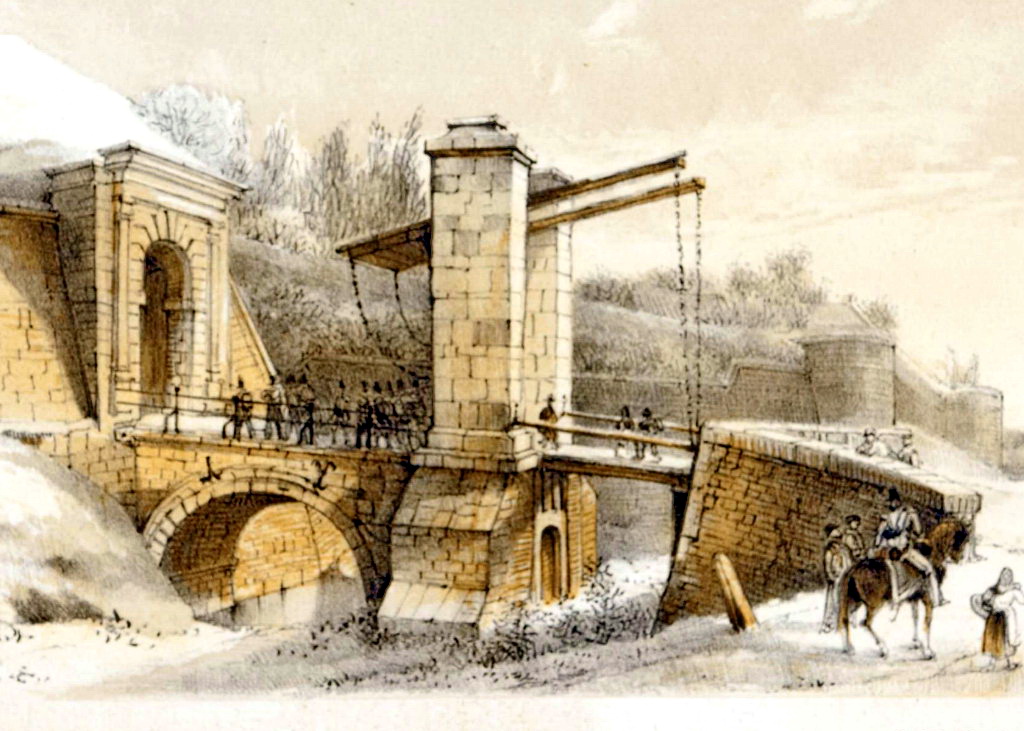The development of our city gates
A gate in a fortress wall is by definition actually a problem. With the fortress wall, the defender tries to close off the city and make it defensible against a possible enemy. Then you would rather not have a hole in the wall. But people and goods have to get in and out of the city and as a result the city gate is a 'necessary evil'. By making provisions around the hole in the wall, a defender can limit the damage.
Brusselsepoort (model on the right)
 It is more difficult to find the city gate on the model of the Brusselsepoort. It has undergone the same developments as the Helpoort and the Tongersepoort. However, because it was located at the highest point of the second city wall, it was given two additional towers in the fifteenth century, which were built further forward. The new towers also caused the gate passage to curve, making it difficult for an enemy to cover its length. Later on, it was decided to house the gateway in a bastion, which was largely cast in earth, a pentagonal extension of the city wall. As a result, the Brusselsepoort in fact became a fairly long tunnel that made an almost right-angle bend. The gate exit was out of sight of an approaching enemy.
It is more difficult to find the city gate on the model of the Brusselsepoort. It has undergone the same developments as the Helpoort and the Tongersepoort. However, because it was located at the highest point of the second city wall, it was given two additional towers in the fifteenth century, which were built further forward. The new towers also caused the gate passage to curve, making it difficult for an enemy to cover its length. Later on, it was decided to house the gateway in a bastion, which was largely cast in earth, a pentagonal extension of the city wall. As a result, the Brusselsepoort in fact became a fairly long tunnel that made an almost right-angle bend. The gate exit was out of sight of an approaching enemy.
By incorporating it into the bastion of Brussels, the gate might have become the strongest city gate in Maastricht. But this gate too was gradually further surrounded by outbuildings and as a result, just like the other city gates, came to lie in the second or third line of defense of the fortress.
The Brusselsepoort can also be seen in its entire fortress biotope on the model of the high front of the fortress in the nineteenth century. You will find this model one floor up on the wall. You can see the gate and bastion of Brussels approximately in the middle of the model.
Jos Notermans
October 2, 2021





